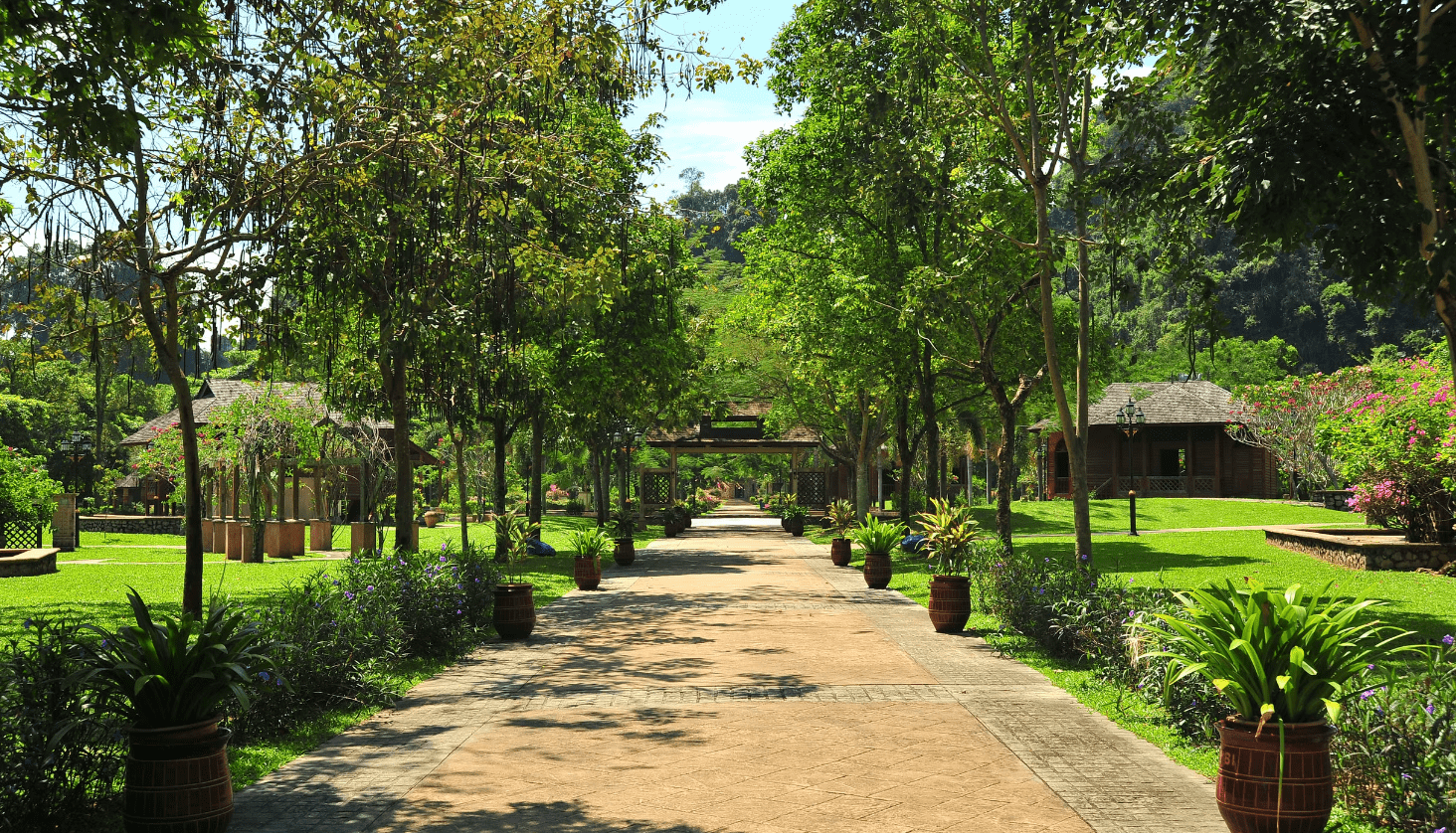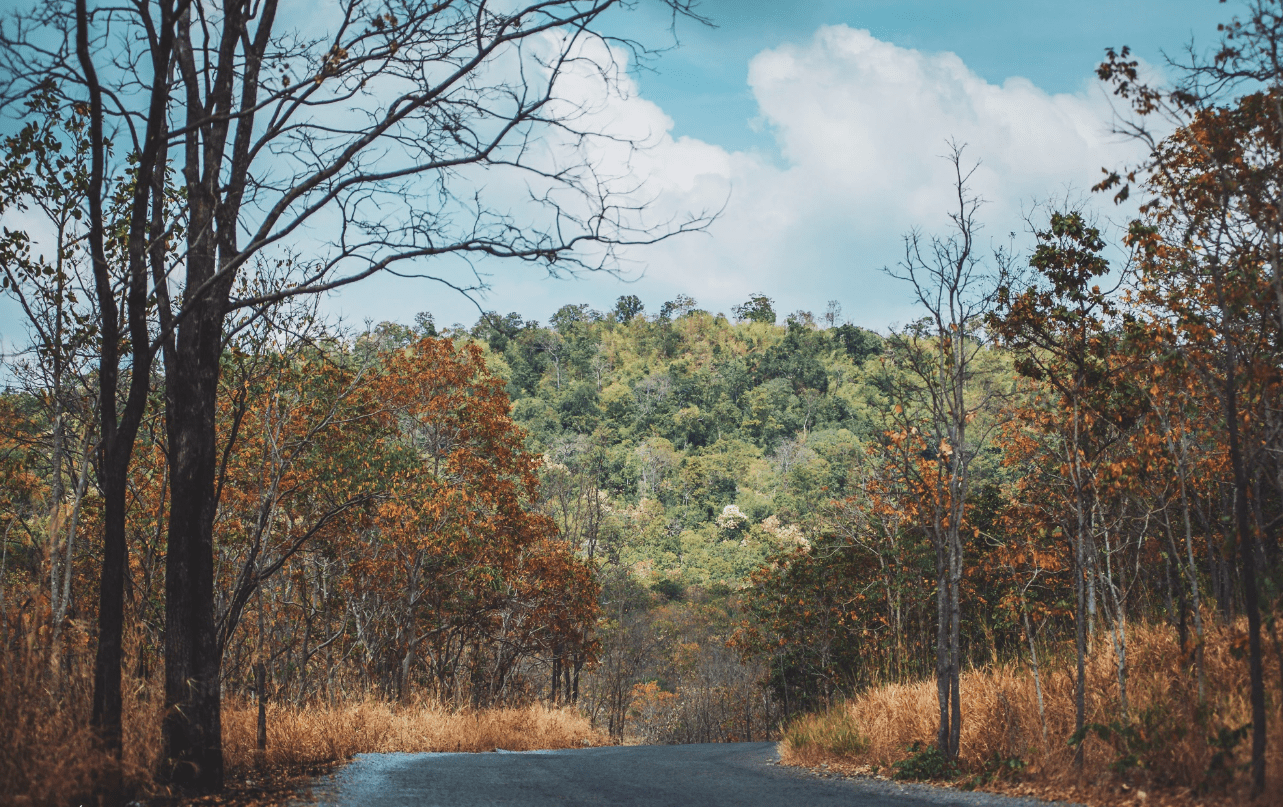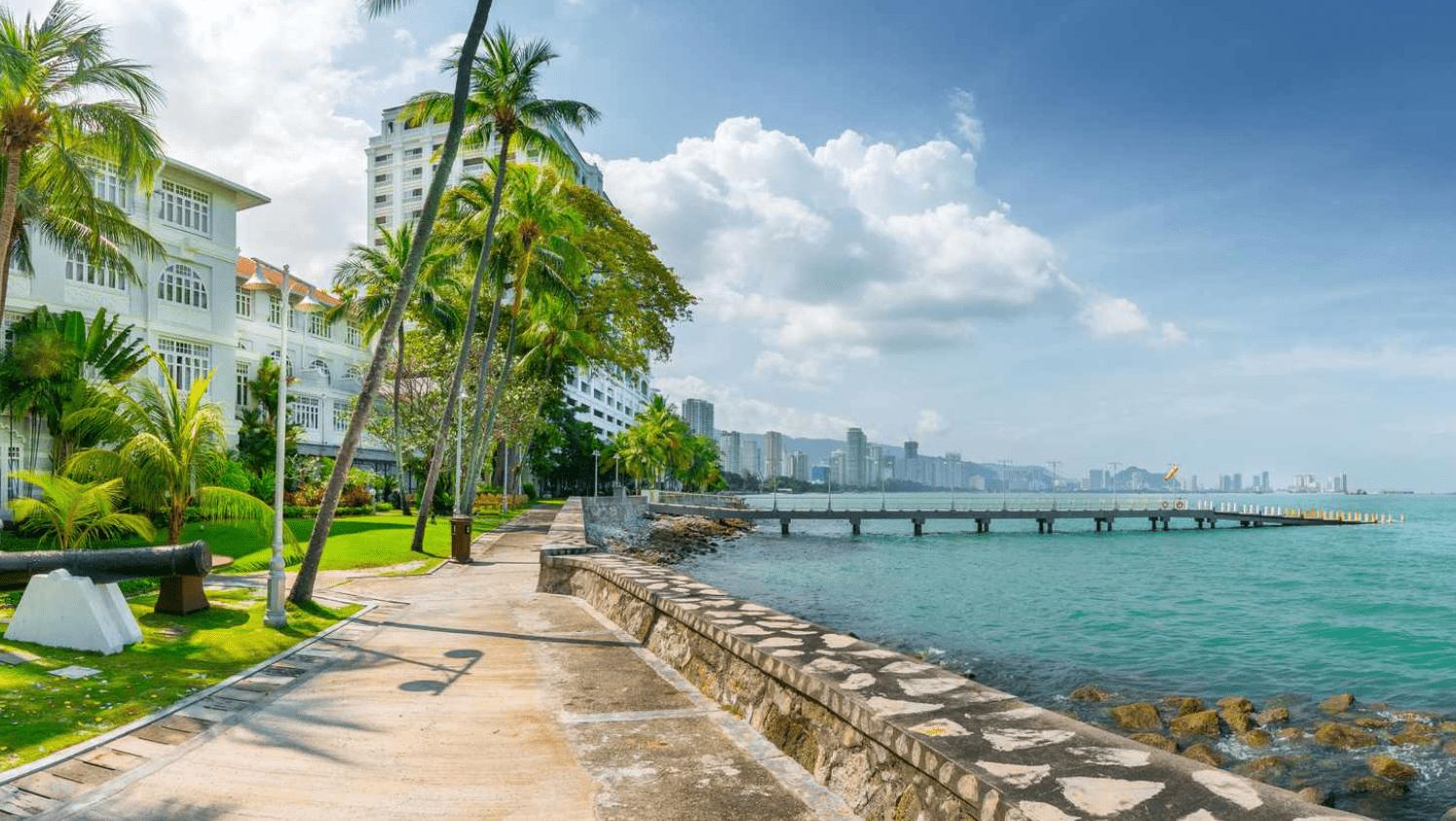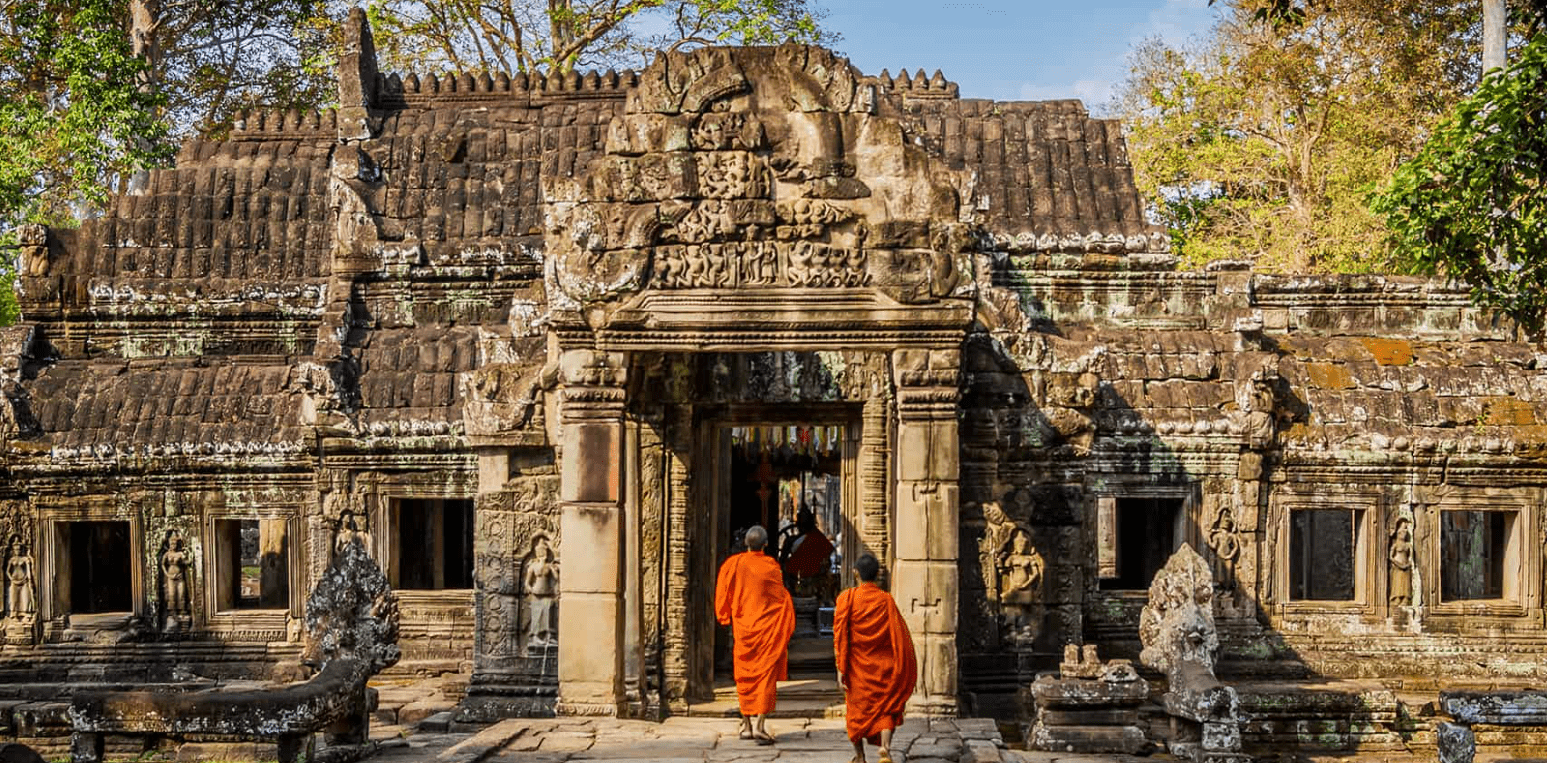Things to do in Ipoh: This Ipoh itinerary highlights the city’s top attractions, including its vibrant street art, architectural gems, and renowned hawker food, along with travel tips on how to get from Kuala Lumpur to Ipoh.
Traveling often feels like stepping into a moment rather than just arriving at a new location. The sensory experience—sight, smell, taste, sound, and touch—blends with a unique atmosphere, creating a deep immersion in the place. Ipoh embodies this sensation perfectly.
Why Visit Ipoh?
As the largest city in Perak state, Peninsular Malaysia, Ipoh remains one of the country’s hidden treasures. Its rich history includes influences from sultans, British colonizers, tin miners, tea planters, Chinese traders, and contemporary street artists, all contributing to its unique character. The city captures Malaysia’s multicultural essence and historical layers with a nostalgic and effortlessly cool vibe.
Top Things to Do in Ipoh: Highlights of the Itinerary
Ipoh Food
Ipoh is often hailed as Malaysia’s culinary capital. The city boasts a plethora of dining options, with bustling hawker markets taking over the streets at night. Unique dishes that originated in Ipoh, such as Hakka mee, Chee cheong fun, Kai se hor fun, and Ipoh laksa, are must-tries. Additionally, Ipoh is famous for its white coffee, available in charming retro cafes throughout the city.
Ipoh Laneways
Ipoh Old Town features historic laneways transformed into vibrant street art and cultural precincts. Concubine Lane stands out as the most popular spot, perfect for wandering, people-watching, and café-hopping.
Ipoh Street Art
While Penang may be Malaysia’s street art capital, Ipoh also has an impressive collection of murals by local artists, including those by renowned Lithuanian artist Ernest Zacharevic. The murals add a vibrant touch to Ipoh’s heritage architecture.
Colourful Architecture
Ipoh’s architectural landscape is a blend of heritage shophouses, British Colonial structures, and modern designs. The colorful shopfronts and diverse architectural styles make the city’s aesthetic appealing to enthusiasts.
Ipoh Cave Temples
Just outside the city, stunning temples are carved into limestone formations. Notable ones include Sam Poh Tong, Kek Lok Tong, and Perak Cave Temple, offering a serene retreat from urban life.
Ipoh Travel Essentials
Duration of Stay
Though Ipoh can be visited as a day trip from Kuala Lumpur or Penang, staying for a few days is highly recommended. A 3-day, 2-night stay provides a comprehensive experience of the city.
Getting to Ipoh
Ipoh’s central location makes it an accessible stopover between Kuala Lumpur and Penang. It can be reached by car, train, or bus. Trains from Kuala Lumpur take around 2.5 to 3 hours and are a comfortable, affordable option. Buses are also available, with a travel time of just over 3 hours. For those preferring convenience, private car transfers offer a direct and comfortable journey. Travel from Penang or Cameron Highlands to Ipoh is also possible by bus.
Day Trip to Ipoh
For those limited on time, a day trip to Ipoh is feasible, especially if traveling by private car or joining an organized tour. However, a longer stay is ideal to fully appreciate the city’s offerings.
Accommodation in Ipoh
Ipoh offers a range of accommodations, from budget hostels to boutique hotels. The Old Town provides heritage inns and boutique stays, while the New Town has modern hotels and hostels. Popular options include Garden Hostel for budget travelers, French Hotel and Ban Loong Hotel for mid-range stays, and boutique options like 27 Concubine Lane and Sarang Paloh Heritage Stay.
Orientation & Getting Around
Ipoh is divided by the Kinta River, with Old Town featuring heritage buildings and New Town offering modern amenities. Both areas are worth exploring. The city is walkable, though temperatures can be high. Taxis, Uber, and Grab services are available for more comfortable travel.
Ipoh Itinerary: 72-Hour Overview
Day 1: Heritage Ipoh
- Breakfast at a traditional coffee shop
- Explore the Ipoh Heritage Trail
- Self-guided street art tour
- Enjoy white coffee and egg tarts
- Visit Ipoh’s house museums and Kong Heng Square
- Stroll through Ipoh’s laneways
- Dinner at Gerbang Malam night market
Day 2: New Ipoh
- Dim sum breakfast
- Visit Ipoh Flea Market
- Explore Mural Art’s Lane and Panglima Kinta Mosque
- Dessert Street
- Discover New Town architecture and Tong Sui Kai Hawker Centre
- Evening cocktails at Tiga Bar
Day 3: Beyond the City
- Explore Ipoh Cave Temples and Mirror Lake
Ipoh Itinerary Day 1: Heritage Ipoh
Breakfast at a Traditional Coffee Shop
Ipoh’s traditional coffee shops evoke nostalgia, with their old-world charm and classic offerings. Local favorites include Lim Ko Pi and 22 Hale Street, known for their authentic coffee and kaya toast.
Walk the Ipoh Heritage Trail
Ipoh’s colonial and historical architecture is best explored through the Heritage Trail. Key highlights include the Ipoh Railway Station, Majestic Station Hotel, and various pre-war shophouses.
Track Down Ernest Zacharevic’s Ipoh Murals
Ernest Zacharevic’s murals in Ipoh, inspired by local culture, add a unique touch to the city. Major murals include “Old Uncle Drinking Coffee” and “Trishaw.”
Try Ipoh’s Famous White Coffee & Egg Tarts
No visit to Ipoh is complete without sampling the city’s white coffee and egg tarts. Notable spots include Kedai Kopi Sin Yoon Loong and Nam Heong White Coffee.
Learn About Local History at a House Museum
Ipoh’s house museums, such as Han Chin Pet Soo, offer insights into the city’s tin mining heritage and local history.
Visit Panglima Kinta Mosque
At the end of Mural Art’s Lane stands Panglima Kinta Mosque, a historic site worth a brief visit. Established in 1898, this mosque was once among the most impressive in Ipoh, distinguished by its striking blue and white facade. Visitors are invited to explore the mosque outside of prayer times.
Indulge in Ipoh’s Dessert Delights
For a sweet afternoon treat, explore Ipoh’s unofficial dessert haven. The New Town area is home to some of the city’s top bakeries, cookie shops, and dessert bars, all within a few blocks. Begin with an ice cream sandwich at Hokkaido Ice Cream Puff before sampling Perak’s renowned pastries at Chin Han Guan Biscuits and Guan Heong Biscuit Shop. Don’t miss the chance to enjoy an egg tart from Hong Kee Egg Tart.
Discover New Town’s Diverse Architecture
While the Old Town features a curated collection of heritage buildings, Ipoh’s New Town offers a blend of past and present. This area is a paradise for those who appreciate concrete, Brutalism, and abandoned structures. Beyond the 1950s theatres, such as the Ruby, and various dilapidated hotels, offices, and banks, one can find original terrazzo floor mosaics, hand-painted shop signs, and more. The New Town’s arched five-foot ways and reclaimed buildings offer a unique aesthetic, ideal for street photography.
Dinner at Tong Sui Kai Hawker Centre
A visit to a traditional Malaysian food market is essential for any Ipoh itinerary. The best hawker centres are located in the New Town, with Tong Sui Kai being a standout choice. Operating from 6pm daily, this hawker centre features numerous stalls, each specializing in a few dishes prepared fresh to order. Guests should grab a table and explore the aisles to assemble their meal. This is the perfect spot to savor Ipoh’s culinary specialties, such as Nasi Kandar, Ipoh Laksa, and Ayam Garam. For dessert, enjoy Ais Kacang or visit Funny Mountain Soya Beancurd for Tau Fu Fah.
Cocktails at Tiga Bar
Conclude the day with a visit to Tiga Bar, Ipoh’s premier cocktail destination. Located in a heritage building on Market Lane, Tiga Bar offers inventive drinks inspired by local heritage and ingredients. The Dr. Ho Remedy, featuring cognac infused with Ho Yan Hor tea, is a notable recommendation.
Ipoh Itinerary Day 3: Temples, Caves, and Lakes
After exploring the city, head 5km southeast to Gunung Rapat to discover Ipoh’s premier natural attractions. This area, accessible by taxi or rented bicycle, provides a full day of exploration. It features stunning cave temples, such as Sam Poh Tong, the oldest and largest cave temple in Malaysia, with panoramic views of Gunung Rapat from its 240-step entrance. Perak Tong Cave Temple, Nam Thean Tong Temple, and Ling Sen Tong Temple are also worth visiting. Further south, Guanyin Cave and Kek Lok Tong Buddhist Temple offer additional highlights.
Tasik Cermin (Mirror Lake)
Tasik Cermin, or Mirror Lake, is a popular spot among locals and forms part of the Gunung Rapat waterway network. The area features viewing platforms and nearby restaurants. Visitors can enjoy short walks or bike rides around the lake, or visit Qing Xin Ling Leisure & Cultural Village, a notable local attraction. While Mirror Lake was not visited during this trip, detailed planning information can be found in Daphne’s guide.
Extended Time? Explore More Day Trips from Ipoh
For those with additional time, consider these day trips:
- Ipoh to Cameron Highlands: Spend a day exploring tea plantations, strawberry picking, or hiking in the rainforest. Buses depart from Ipoh at 8am, arriving in Cameron Highlands at 10:45am, with the last return bus leaving at 6pm. Weekdays are preferable to avoid weekend crowds. Book transportation in advance through Bookaway.
- Ipoh to Kuala Kangsar: Perak’s royal town is a half-day trip from Ipoh, featuring the Ubudiah Mosque and proximity to cave temples. The train ride takes 30 minutes, with regular departures from Ipoh Railway Station. Tickets cost around 4 USD. Alternatively, join a private day tour from Ipoh, which includes hotel transfers, a pottery workshop, and a visit to the historic Victoria Bridge. Check prices and availability on Klook.
- Ipoh to Kellie’s Castle: For a unique outing, visit Kellie’s Castle, located 20km south in Batu Gajah. This unfinished 1915 Moorish-revival castle, sponsored by a Scottish rubber baron, offers a glimpse into history and provides great photo opportunities. More information on Kellie’s Castle is available online.



